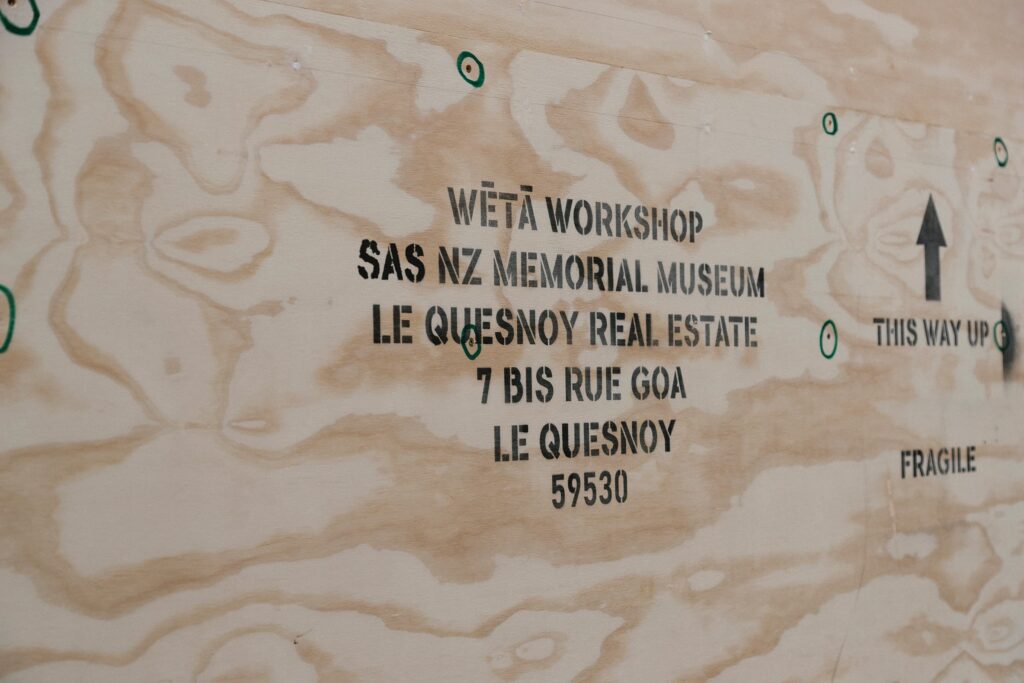Transporting fragile objects and delicate exhibits with help from our friends at Mainfreight requires careful planning and expert packing skills.
We ask Wētā Workshop’s Manufacture Technical Director – Location Based Experiences, Blair Ryan, how you wrap and pack precious cargo and how he deals with the pressure.
This is precious cargo. Do you feel the pressure to get the packing right?
Absolutely, there’s a significant pressure to ensure the packing is done meticulously. These are bespoke pieces travelling over long distances on tight schedules. Getting the packing right is crucial to ensure they arrive at their destinations in pristine condition and can be appreciated by those visiting The NZ Liberation Museum – Te Arawhata.
Apart from the obvious … what are the challenges with transporting fragile objects?
Beyond the concerns of fragility, some challenges include ensuring that the objects are protected from temperature and humidity changes during transportation, as these can cause damage.
We also need to consider potential vibrations and shocks that could occur during transit, which might impact more delicate pieces.
Where do you start?
In some ways it starts right at the point of designing a piece. Some of these pieces are far too large to package in their fully constructed forms. So we design and manufacture them as smaller components that can be assembled and disassembled as needed. Then when it comes to the physical packing, usually the biggest piece we can get into the museum will dictate shipping method and packing.
What materials do you use to help safeguard objects?
We use a variety of materials including custom-designed crates, foam padding, bubble wrap, soft cloth, and custom-cut inserts that securely hold each piece in place to prevent movement during transportation.
Is there a particular method for wrapping and packing something?
Yes. We begin by thoroughly documenting each item to be packed. Then we use packing materials to ensure everything is safely secured. We carefully place the wrapped piece inside the box, ensuring there is enough space around it for additional cushioning. Then we fill any gaps with more acid-free tissue or foam to prevent movement. Then we seal the box with packing tape and label it clearly for the install team who will be onsite in Le Quesnoy when it arrives.
Does every piece get individually wrapped? Or can certain pieces get packed together?
Each piece is usually individually wrapped to prevent any potential contact or friction between items. However, for smaller and less fragile pieces, we might pack them together as long as they are adequately cushioned and won’t cause damage to each other.
Were there any particular items for Te Arawhata that were challenging to transport?
Due to the share scale of the giant soldier and the ladder, we needed to take care that each individual component for these pieces were meticulously recorded and packaged in a way that they would be easily and intuitively reassembled by the install crew in France.
Is there anything else important to know about packing either in general or for this specific project?
In addition to the specifics mentioned, it’s important to maintain clear communication with the shipping and handling teams throughout the entire process. Labelling each package with clear instructions for unpacking and handling is essential. Also, having a contingency plan in case of unexpected delays or changes in transportation routes is crucial to ensure the items’ safety.


